#hatice sultan daughter of bayezid ii
Photo
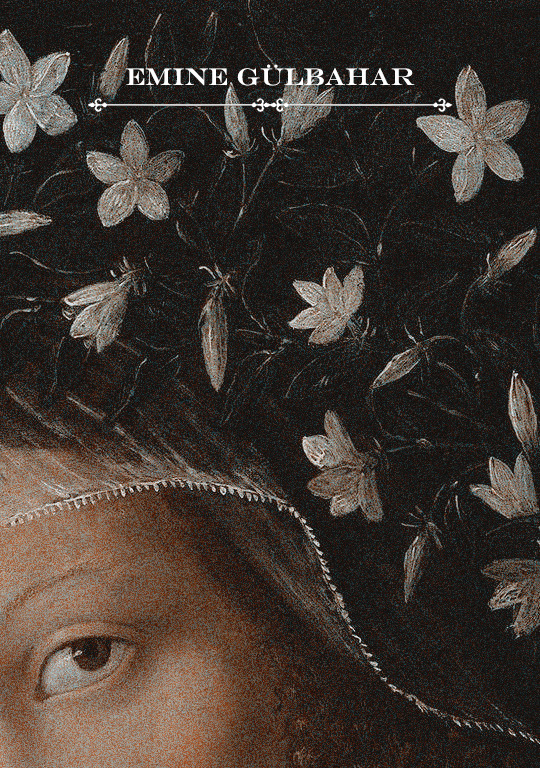


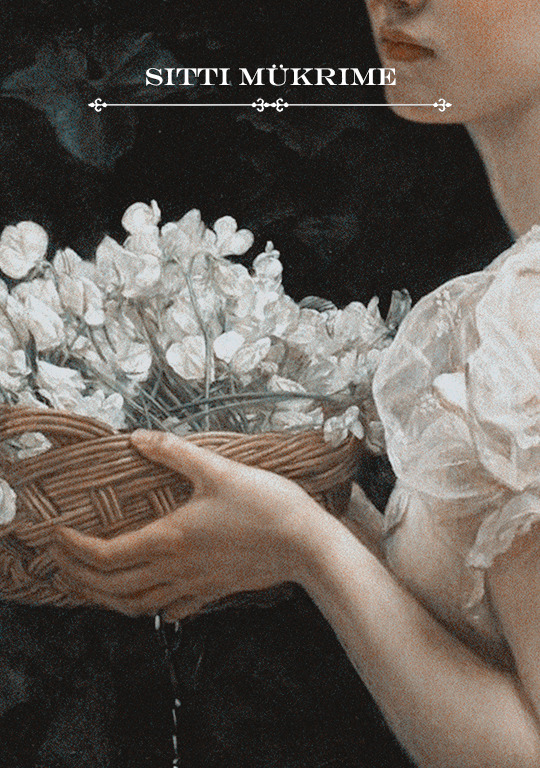




Mehmed II Conqueror + consorts (pictures are for aesthetic)
Emine Gülbahar Hatun — was a favourite consort of Sultan Mehmed II. In most sources she is referred as non-muslim slave who was converted to Islam after her arrival to the harem. There is no agreement on her origins some historians think she was Pontic Greek, Albanian or lowly Slavic. She was the mother of the future Sultan Bayezid II and Gevherhan Hatun. She died circa 1492 and was buried in her mausoleum inside the Fatih Mosque next to her late husband.
Çiçek Yagmur Hatun — was a wife or consort of Sultan Mehmed II. According to some sources she could have been Turkish noblewoman or Serbian, Greek, Venetian, French slave. She entered the harem or married Mehmed at Constantinople and gave birth to her only son Şehzade Cem (Ottoman claimant Sultan) on 22 December 1459. It is not known the degree of influence she had during Mehmed’s reign or if she even was favoured by him. She died on 3 May 1498 of plague and was buried in Cairo.
Hatice Hatun — was a thrid legal wife of Sultan Mehmed II. She was a possible daughter of Zaganos Mehmed Pasha. In 1463 she became Mehmed's third legal wife. After her husband death she remarried with a statesman.
Sitti Mükrime Hatun — was a Turkish Princess and first legal wife of Sultan Mehmed II. Her father was Süleyman Bey the sixth ruler of Dulkadir State. When Mehmed turned seventeen he married her for political purposes. Her possible offspring is unknown. Due to her middle name Sittişah is sometimes confused with Gülbahar Mükrime Hatun another consort of Mehmed. She died in September 1486 and was buried in a mausoleum built inside her mosque.
Helena Palaiologina — was a possible wife of Sultan Mehmed II. Her entering the Sultan's harem is controversial and remain unconfirmed. She was a daughter of the Despot of Morea Demetrios Paleologos the brother of Constantine XI Palaiologos the final Byzantine emperor and Theodora Asanina the daughter of Paul Asan. Some rumors says Mehmed II asked for her after his campaign in Morea having heard of her beauty. Probably he never bedded with her because he was afraid she would poison him. In another case Helena was provided with a pension and large estate at Adrianople by the Sultan though she was forbidden to marry. She died of unknown causes in 1469 or 1470 in Edirne.
Gülşah Hatun — was a second legal wife or consort of Sultan Mehmed II. There is no informations about her origins. She married Mehmed or entered his harem in 1449 when he was still a Prince and the governor of Manisa. Shortly before Murad’s II death she gave a birth to her only son Şehzade Mustafa and followed him to Konya when he became governor of the province. She died circa 1487 and was buried in Bursa in the tomb she had built for herself near that of Mustafa.
Maria Hatun — was a consort of Sultan Mehmed II. Before she entered Mehmed’s harem she was a widow of Alexander Komnenos Asen. According to some sources she was judicated as the most beautiful woman of her age. Some historians claims she could be more likely Murad’s II concubine than Mehmed’s.
Anna Hatun — was a consort of Sultan Mehmed II. Her parents were Trabzon Greek emperor David Komnenos and Helena Kantakuzenos. The marriage was initially proposed by her father, but Mehmed refused. Nontheless when Trabzon was taken in 1461 Anna entered the harem and stayed there for two years after which Mehmed married her off to Zaganos Mehmed Pasha.
#ottoman history#mehmed ii#consort#gulbahar hatun#cicek hatun#helena hatun#hatice hatun#maria hatun#sitti hatun#anna hatun#ottoman empire#aestehtic#history#historyedit#sultanate#wives#myedit#ottoman ladies
116 notes
·
View notes
Note
Instead of character, would you give your opinion on family dynamics in MC?
The obvious point to make here is the fact that there is a deeply toxic family dynamic and a lot of generational trauma within the dynasty in MC. However, this takes a lot of different forms and manifests differently in different circumstances.
So each prince has to contend with the existence of the fratricide law that hangs above them like the sword of Damocles. This affects their relationships to their brothers but also to their fathers and sons because by necessity they are set against each other. Even though Mustafa, Bayezid and Cihangir all love each other, their alliance could never have lasted and they were the only people who couldn't see it. The implications of the fratricide law also come between the previously very sweet friendship of Mustafa and Mehmet, ultimately leading to Mehmet's death at the hands of Mahidevran. And the rivalry between Selim and Bayezid would never have been so fierce or unstoppable for their mother without the existence of the fratricide law. The tragedy is that Süleyman's sons could never truly be on the same side because the fratricide law set them inherently against each other in a fight for their lives. Whether they want to acknowledge that painful reality or not. You also see this in the generational trauma of Süleyman's remembrance of how his own father Selim I overthrew his father Sultan Bayezid II and his fear of history repeating itself re. Mustafa. Which in turn only ends up repeating the cycle as Süleyman goes on to execute Mustafa. So both the fratricide law itself and the trauma that it causes the male members of the Dynasty perpetuated the vicious cycle of tragedy.
Now that that's out of the way, on to the paragraphs about the women.
The dynamic between the princesses and their 'sisters-in-law' who are the mothers of princes in the next generation is very revealing. And my takes are going to be very similar to @redxluna's here because we basically agree on this). Especially in terms of how Hürrem and Mahidevran relate to Süleyman's sisters. Who essentially perpetuate the dynamic started by their mother. They are concerned with 'protecting the family' above all else, but ultimately what the result of this is that Ayşe Hafsa started this dynamic with Hürrem and Mahidevran that reflects the 'golden child and scapegoat' in toxic families where Mahidevran is the 'golden child' who is protected and favoured and Hürrem is the 'scapegoat' who gets punished and blamed (as @redxluna has observed on several occasions). This happens until episode 55 where the roles reverse. But not because she feels like she has mistreated Hürrem but because Mahidevran seemed to challenge her by saying she would be the next Valide Sultan. And just because she swaps which daughter-in-law fits which role it doesn't change the fact that it's still essentially the same dynamic. And it's one that her daughters continue. Listening to and siding with Mahidevran meanwhile they villify and demonise Hürrem. Both of these archetypes coming from royal women come from a place of privilege. Because it doesn't directly affect them as much, the princesses don't have to worry as much about the fratricide law as Hürrem and Mahidevran do as the mothers of princes. This enables them to dehumanise Hürrem and Mahidevran through praise or blame while focusing myopically on the good of 'the family' and just not acknowledging their points of view. They can condemn their sisters-in-law for their crimes while safe in the privilege of not having to get their own hands quite so dirty. And when they do partake in schemes, it enables them to ignore the fact that they are choosing sides between their own nephews and are implicitly choosing the one they see as more worthy of life (which @redxluna pointed out that Hatice does as she chooses to support Mustafa's claim to the throne when Süleyman was poisoned and sick in season). So the privilege of the princesses, notably Süleyman's sisters, enables them to ignore the true horrors of the situations that their sisters-in-law are in.
And on a similar note to end things, there's also the dynamic between Hürrem and Mihrimah. Since that is the main relationship between an enslaved mother and her princess daughter that gets a significant amount of screentime. Which gives both women a unique relationship to the generational trauma of that family. Hürrem's initial rejection of Mihrimah only makes sense in this context. As she wanted to have another son due to the approval and acceptance from Süleyman and the dynasty which that would bring. Which is something that only an enslaved mother in Hürrem's position would have to worry about. Likewise with the fact that Mihrimah has to see her aunts attacking Hürrem and has to defend her mother, using her own privileged status as a dynasty member in order to stand up for her. And she has to do this from a fairly young age as well. So she gets a level of pressure put on her as a result of this that simply wasn't the case for her aunts as the daughters of a Crimean princess. Likewise this also adds a dimension to Hürrem's control of Mihrimah's love life. Namely when it comes to Hürrem's involvement in Mihrimah's marriage to Rüstem. Especially when you consider that Hürrem has no real conception of how consent works. One of her first experiences upon entering the harem was a form of institutionalised sexual assault and even when it came to Süleyman she couldn't truly say no to him and mean it. As much as she weaponises saying no for her own ends, she only does so in the knowledge of and expecting him to not take it for an answer. And, understandably given her life experience but very tellingly, she views this as completely normal. In my opinion, this gives some very revealing context to Hürrem pressuring Mihrimah into marrying and staying in her marriage with Rüstem. Not only does she not see how much of a creep Rüstem has been towards Mihrimah since she was a child, but she genuinely cannot fathom Mihrimah needing to say no. All she can see is the combination of love and duty, two things that have always been inseparable for Hürrem. So while Hürrem does seem to be following the traditional aristocratic mores of arranging a marriage for her daughter, there is that other dimension to it because of her specific background. So as much as Hürrem clearly loves her children and that absolutely includes Mihrimah, she still passes on that generational trauma. Not only because of Mihrimah's blood connection to the dynasty but in a way that is inextricably tied to her mother's own trauma of enslavement.
2 notes
·
View notes
Photo







Ottoman Princesses named: Hatice
Hatice is the Turkish equivalent of the Arabic name Khadija, the name of the first wife of Prophet Muhammad. As such, it was one of the most popular names in the Ottoman Dynasty both for princesses and consorts.
#history#historyedit#ottoman history#hatice hatun daughter of orhan#hatice hatun daughter of murad ii#hatice sultan daughter of mehmed iii#hatice sultan daughter of mehmed iv#hatice sultan daughter of mustafa iii#hatice sultan daughter of mahmud ii#hatice sultan daughter of murad v#durrusehvar sultan daughter of abdulmecid ii#ottomanladiesedit#princessesnames#hatice hatun daughter of mehmed i#hatice sultan daughter of bayezid ii#hatice sultan daughter of sehzade bayezid#hatice sultan daughter of ahmed iii#hatice sukriye sultan daughter of sehzade yusuf izzeddin#long post
1K notes
·
View notes
Text
International Known Queens & Empresses (4/?)
Haseki Hürrem Sultan


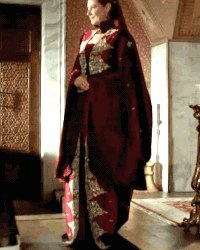



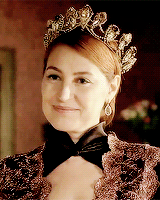
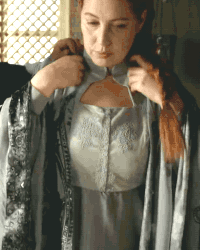


Daughter of Lisovsky (?)
Wife (Haseki Sultan) of Suleiman the Magnificent
Mother of Sehzade Mehmed, Mihrimah Sultan, Sehzade Abdullah, Sultan Selim II, Sehzade Bayezid, and Sehzade Cihangir
Grandmother of Ayse Hümasah Sultan, Sultanzade Osman (Mihrimah), Sultan Murad III, Sehzade Mehmed (Selim), Sehzade Abdullah (Selim), Sehzade Cihangir (Selim), Sehzade Mustafa (Selim), Sehzade Suleiman (Selim), Ismihan Sultan (Selim), Gevherhan Sultan (Selim), Sah Sultan (Selim), Fatma Sultan, Sehzade Orhan, Sehzade Osman (Bayezid), Sehzade Abdullah (Bayezid), Sehzade Mahmud (Bayezid), Mihrümah Sultan (Bayezid), Hatice Sultan (Bayezid), Ayse Sultan (Bayezid), and Hanzade Sultan (Bayezid)
12 notes
·
View notes
Photo

Family of Bayezid II (quite big lol)
+1 information about the daughter of Mahmud, Ayşe: She surely was still alive between November 1555 and November 1556 since she is listed in Old Palace register with a daily stipend of 70 aspers.
The same 70 apsers daily stipend was given to Sehzade Ahmed’s unnamed daughter. We dont know if this stands for Kamer, Fatma or the unknown daughter.
About his daughters:
Selcuk Sultan 1459-1508
- mother unknown
- she married twice: 1/Ferhad Bey in 1484; 2/Mehmed Bey in 1486
- she had five children: 1/ Nesl-i Şah who died in 1564, she married Halil Paşa in 1510; 2/Gaazi Husrev Bey who was governor of Sarajevo, which he developed into a great city, then he was governor of Smederevo (1521), governor of Bosnia (1526-1533), then governor of Belgrade in 1533 and again governor of Bosnia from 1536 to 1541. He died in Sarajevo and was buried there. 3/ Hanzade who married her cousin, a son of Ilaldi Sultan 4/ unnamed princess who married the son of Halil Paşa (her eldest sister’s husband) in 1510; 5/unnamed princess who married twice, the first time to Grand Vizier Yunus Pasha and the second time to Defterdar Mehmed Çelebi (later Grand Vezier and Egypt governor)
Ayşe Sultan 1465 - after 1515
- she may have been sister to Şehzade Ahmed or to Şehzade Korkut. Ahmed was born in 1466 Korkud in 1467 so Ayşe surely was born before them.
- she married Güvegi Sinan Pasha in 1480 and had several (at least 6) children but we don’t have information about each one of them: 1/ GevherŞah who married one İbrahim Bey 2/ KamerŞah who married the son of Grand Vizier Mesih Paşa 3/ Fatma who married another son of Grand Vizier Mesih Paşa 4/ Ahmed Bey; 5/ Mustafa Bey; 6/Hanzade Ayşe Mihrihan who later married Dukaginzade Sultanzade Mehmed Paşa and had a daughter Mihri Hatun, who surely was alive between 1555 November and 1556 November.
- she built a mosque and a school in Gallipoli and in 1505 she established a foundation
Hatice Sultan 1465 - 1500
- the identity of her mother is unknown
- she married to 1/ Müderris Kara Mustafa Pasha around 1479 and had two children with him: Ahmed Çelebi (1480?-1500) and Hanzade; 2/ she married Faik Pasha after 1483
- she built a mosque, school and fountain in Edirnekapi
- she was buried in Bursa in the Hatice Sultan Tomb, built by her son
Gevherimülük Sultan 1467 - 1550
- mother unknown
- she married to Ahmed Pasha and had 2 children: 1/ Nesli Şahwho died in 1559, she married Dukaginzade Iskender Pasha; 2/ Mehmed Pasha who died in 1557, was governor of Aleppo and Egypt, he married his cousin Ayşe Hanzade Mihrihan, daughter of Ayşe Sultan
- she built a school near the Zal Mahmud Pasha Mosque, and she was buried there
Şehzade Hundi Sultan 1465(?) - 1511
- some suggest a birth date of 1470 but it is not correct as she was the daughter of Bülbül Hatun and so Şehzade Ahmed’s sister. Ahmed was born in 1466 so Hundi had to be born before him.
- Hersekzade Ahmed Pasha was her husband from 1484 and had children with him: 1/ Mustafa Bey who was governor of Bozok and died in 1533 killed by rebels in his province; 2/ HümaŞah who died after 1551; 3/ Musa Bey
Ilaldi Sultan ? - before 1518
- mother unknown
- she had two children with her husband Hain Ahmed Pasha: 1/Aynişah who died after 1531 and married Abdüsselam Çelebi; 2/ unnamed son who married his cousin, the unnamed daughter of Selçuk Sultân
- she wrote a congratulation letter to Selim I
Aynişah Sultan 1464(?) - after 1512
- daughter of Şirin Hatun and sister of Şehzade Abdullah (b. 1465)
- she married Akkoyunlu Damad Göde Ahmed Bey in 1490 and had children: 1/ Hanzade who married to Yahyapaşazade Gaazi Küçük Bali Paşa; 2/ unnamed princess who married Şehzade Alaeddin, one of Şehzade Ahmed’s sons
- she built a school in Istanbul and established a foundation in 1506
- she sent letters of congratulations to Selim I when he became sultan
Hüma/Hümaşah Sultan ? - after 1504
- mother unknown
- she married Antalyalı Bali Paşa around 1482
- she was buried in Bursa
Kamer/Kamerşah Sultan ? - ?
- she was the daughter of Gülruh Hatun
- she was married to Damad Nişanci Kara Davud Pasha, with whom she had a daughter who later married one Mesih Bey.
- she was buried in the tomb of her mother in Bursa
Şah/Şehzade Şah Sultan ? - after 1506
- her mother is unknown
- she married Nasuh Bey around 1490 and had a daughter
- she was involved in charity
- she built a mosque in 1506
- she was buried in her sister Hatice’s mausoleum in Bursa
Sofu Fatma Sultan 1466(?) - after 1515
- she was the daughter of Nigar Hatun and sister of Şehzade Korkut and since Korkut was born in 1467 so actually Sofu Fatma should born even before 1464/5/6.
- she married Güzelce Hasan Bey around 1504 and had two children with him: 1/ Mehmed Çelebi who later married Ayse Sultan daughter of Şehzade Alemşah; 2/ unnamed daughter who later married Ahmed Bey, son of Ali Bey and Fatma Hanımsultan
- about her marriages it is possible she had a first marriage which is not listed by most historians (she would be too old for a first marriage in 1504). She should have a first marriage around the early 1480's. About the identity of the first hubby: Öztuna claims Sofu Fatma's firs husband was İsfendiyâroğlu (Cândâroğlu) Mirza Mehmed Pasha, son of Kyzyl Ahmed Bey. Öztuna gives no marriage date. The problem is, Fatma remarried in 1504 but the pasha was alive until 1530. I don't see why would they divorce, so well I don't know. Öztuna claims they had a son, Mehmed Bey, together who later married Selim I's daughter Gevherhan. Its fine Fatma's son Mehmed did marry Gevherhan okay. But then why would she name her second son also Mehmed? Because she had a son Mehmed from her second marriage who married Ayse Sultan daughter of Şehzade Alemşah. So just why 2 Mehmeds? I dunno this... Maybe one of the names is mistaken?
- she was charitable --> left all her possession to the poor when she died
- she was buried in the tomb of her half-brother Şehzade Ahmed in Bursa
Sultanzade Sultan ? - ?
- daughter of Hüsnüşah Hatun and sister of Şehzade Alemşah
#Bayezid ii#Ayşe hatun#ayşe#ayse#bülbül hatun#bülbül#ferahşad hatun#ferahsad#hüsnüşah hatun#husnusah#ayşe gülbahar hatun#ayse gülbahar#gülbahar#gulbahar#gülruh hatun#gulruh#nigar hatun#nigar#şirin hatun#şirin#sirin#Abdullah#Ayşe sultan#Hatice Sultan#Ahmed#Korkut#Gevherimülük Sultan#gevherimülük#gevheri#hatice
28 notes
·
View notes
Photo
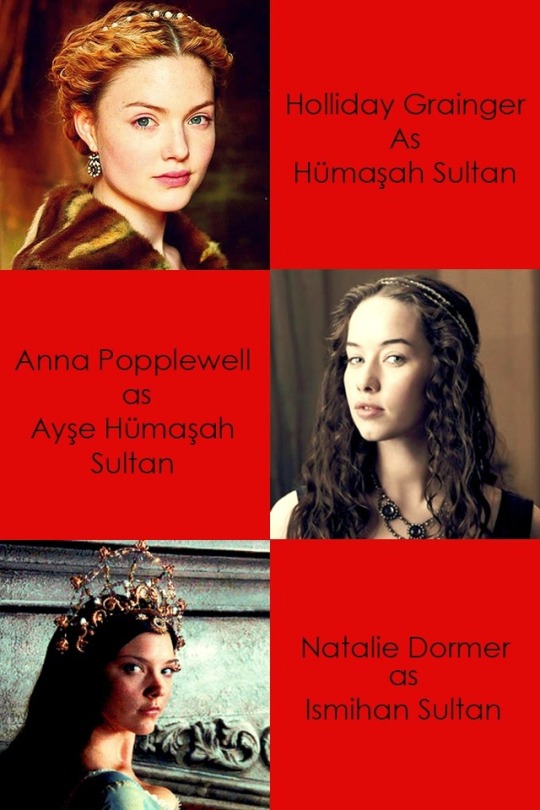

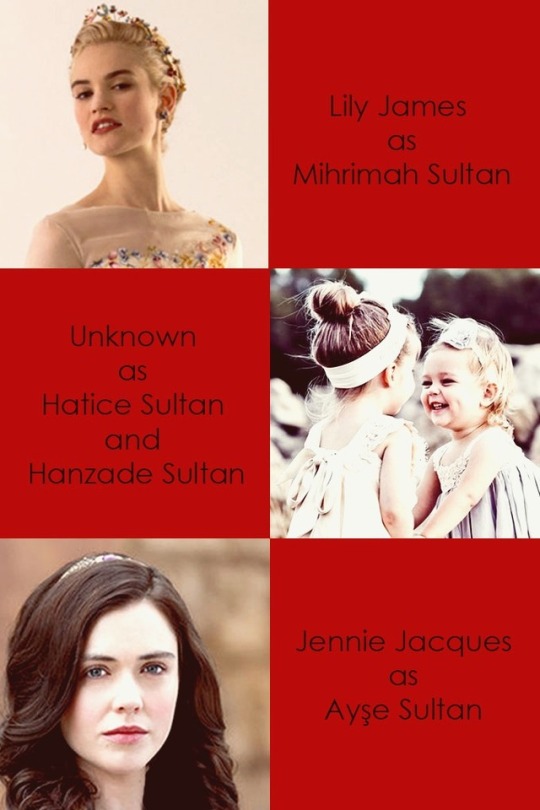
Muhteşem Yüzyıl (Magnificent Century) fancast: Daughters of Hürrem Haseki Sultan. Second generation.
1. Hümaşah Sultan (1540-1593) - daughter of Şehzade Mehmed of the Ottoman Empire.Like her cousin Ayşe Hümaşah Sultan, she was reportedly beloved by their grandfather, to whom she wrote letters.She is regarded amongst the most influential women of Suleiman's reign.This affection can be explained, in large measure, by the fact that her late father, Mehmed, was Suleiman's favorite son. It was she who, in 1563, gifted her cousin Şehzade Murad (future Sultan Murad III) with a concubine that would go on to be Safiye Sultan.
2. Ayşe Hümaşah Sultan (1541–1594) - daughter of Mihrimah Sultan of the Ottoman Empire and Rüstem Pasha. She was her parents' first child and only daughter, and possibly her grandparents' first grandchild as well. She had several brothers, whose number and names are though contested.
3. Ismihan Sultan (1544 – 1585) - daughter of Selim II and Nurbanu Sultan. She was the most powerful daughter of Selim II because she was married to the Grand Vizier Sokollu Mehmed Pasha. She is famous for having built the Sokollu Mehmed Pasha Mosque and Esmahan Sultan Mosque.
4. Gevherhan Sultan (1544 - after 1604) - daughter of Sultan Selim II and Nurbanu Sultan. Soon after his succession, Mehmed's son by Handan Sultan, Ahmed I wanted to express his gratitude to Mehmed Pasha and Gevherhan Sultan for the role they had played in bringing his parents together. He also named one of his daughters after her.
5. Şah Sultan (1545 – 1580) - daughter of Selim II and Nurbanu Sultan. The union of Şah Sultan to Zal Mahmud is said to be a very happy one. They were suited to each another. It was said that, that they fell ill at the same time, lay in their deathbeds together, and expired at the same very moment.
6. Fatma Sultan (1559–1580) - daughter of Sultan Selim II. Fatma was born in 1559,during Selim's princedom, at Konya or Karaman where he served as sanjakbey, or provincial governor, at the time.
7. Mihrimah Sultan (1547 – 1594) - daughter of Şehzade Bayezid. Married in 1562 to Damat Müzaffer Pasha.
8. Hatice Sultan and Hanzade Sultan (1550/1556-?) - daughters of Şehzade Bayezid.
9. Ayşe Sultan (1553- 1572) - daughter of Şehzade Bayezid. Married in 1562 to Damat Hoca Ali Pasha Eretnaoğlu.
#hurrem sultan#magnificent century#muhteşem yüzyıl#Mihrimah Sultan#nurbanu sultan#sultan suleyman#perioddramaedit
35 notes
·
View notes
Text
Bayezid II as a prince and sultan
Part 2 of this ask
As a prince:
- Bayezid II was born to Sultan Mehmed II (then still a prince) and a slave concubine Gülbahar Hatun in January 1448, in Thracian Dimotika.
- He was circumcised together with his brother Mustafa on 17th March 1457.
- Before he was ten, he was made a governor of Amasya, where he moved with his mother.
- While he was a governor of Amasya and commander of border troops, Mehmed II ordered him to execute his own lala, Hayreddin Hizir Pasha. Hayreddin was accused of receiving Uzun Hasan and trying to arrange a marriage between Bayezid and Uzun Hasan’s daughter without Mehmed’s knowledge and of receiving gifts from Uzun Hasan without passing them to Mehmed. Babinger also mentions another version in which Mehmed harboured suspicion against his own son and ordered Hayreddin Hizir Pasha to poison his own son, but later retracted and it was Hayereddin who was put do death instead. Bayezid was then ordered to take up troops against Uzun Hasan.
- Generally, Bayezid and Mehmed’s relationship was very strained. They had very different characters and they often clashed when Bayezid was governor of Amasya. Another example: in 1476 Bayezid received an order from his father to to kill the scholar Muayyadzade, with whom he was displeased. Instead of executing the mullah, Bayezid warned him of the danger, provided with money and helped to escape. Bayezid’s court in Amasya pretty much served as a place of refuge for people who fell out of Mehmed’s favour.
- While Mehmed educated himself in accordance with Byzantine and Classical legacy, Bayezid preferred to study Islamic science, philosophy, poetry and mysticism.
- He took part in several campaigns of his father. Most importantly, he “had served commander of the east Anatolian frontier during his father’s reign and distinguished himself in campaigns against Uzun Hasan and the Akkoyunlu”. (Caroline Finkel).
- Babinger speculates that Bayezid might have poisoned his (at that point ill with gout) father because their relations got later even more violent. Babinger also mentions that Bayezid received a letter in April 1481, informing him that the Grand Vizier Karamani Mehmed Pasha had persuaded Mehmed to appoint Cem as his succesor. Babinger thinks that while Mehmed was ill, his gout wasn’t that serious, and that someone “helped” him to die. It is however more of a pure speculation; Babinger does not cite any convincing sources and he generally seems to be biased against Bayezid (e.g. calling him “mystical and bigoted”). There are even footnotes from editors in Babinger’s book that sources do not generally support this theory.
Fighting for the throne
When Mehmed died, Karamani Mehmed Pasha, the Grand Vizier, hid the fact and sent messengers to Şehzade Cem to come claim the throne as soon as possible. Mehmed Pasha wanted to prevent Bayezid from becoming sultan.
The news about Mehmed’s demise spread however and the army wanted to check whether their padishah is alive. When he failed to appear before them, they broke into the palace and saw the lifeless body. In fury, they killed Mehmed Pasha on the spot.
Meanwhile, all three messengers sent to Cem were arrested. Bayezid had two sons-in-law in the army. The first was the agha of the Janissaries, Sinan Aga; the other was governor of Anatolia. The former and future Grand Vizier Ishak Pasha (the husband of Hatice Halime Hatun, Mehmed’s stepmother), with the help of jannisary commander Sinan Aga, proclaimed Bayezid a sultan and nominated his son Şehzade Korkut as a regent until Bayezid reached the capital.
Bayezid reached Üsküdar on 20th May 1481. Cem however did not accept his brother as a sultan and began a civil war which lasted for over a year, when Cem ran away to Rhodes, and then travelled to several other European countries.
As a sultan
André Clot also refers to Bayezid as an opposite of his father. He was very religious,and ascetic. For example, when he ascended the throne, he ordered to destroy or sell paintings by Italian artists that Mehmed had purchased.
Bayezid was also not fond of war. He only engaged in it when it was necessary. During first years of his reign, there was a constant threat of Cem co-operating with Western European monarchs to invade the Ottoman Empire. Thus, Bayezid didn’t want to tire his army and put all effort to make his country internally stronger, improving administration and economy. Only after Cem died in 1495 in Naples, Bayezid began engaging in wars. He commenced fighting with Venice for the dominance on the Adriatic Sea. Mehmed II began the creation of Ottoman fleet, but Bayezid made it powerful. Bayezid conquered Lepanto, Modon, Koron and Navarino. In 1502, both sides signed a treaty, which was humiliating for Venice. All conquered fotresses remained in Ottoman’s hands and Venice had to pay tribute for Zante.The Ottoman Empire became an important power on the Mediterranean Sea. During Bayezid’s reign, also the first Ottoman-Mamluk war took place from 1485 to 1491. Mamluks were later to be conquered by Bayezid’s successor, Selim I.
However, Bayezid’s strength lay mainly in making the Empire stronger internally He introduced new fiscal solutions to ensure financing for potential campaigns as well as financial reserves. He also introduced new tax on households, called avariz, the revenues of which formed a separate fund. Bayezid’s reforms led to economic prosperity. During Bayezid’s reign, countless public buildings and objects of infrastructure were built. Bayezid also brought Jewish refugees from Spain to the Ottoman Empire (Jews were at the time persecuted by Spanish Inquisition). Bayezid was a great administrator and thanks to his reforms later conquests by Selim Yavuz and Suleiman the Magnificent were possible.
Bayezid supported many poets, artists and learned men. For example, he supported the historian Ibn Kemal, who wrote the history of Ottoman Empire Al-i Osman Tarihi (The History of the House of Osman) and Idris Bitlisi, author of a monumetal work entitled Hasht Bihisht (Eight Paradies), which covered the reigns of first eight Ottoman sultans. He was a musician and a poet himself. Bayzeid was also surrounded by many preachers and members of ulema.
Last years of Bayezid’s reign were characterised by a conflict between the Ottoman Empire and the newly emerged Safavid dynasty. Bayezid’s hesitance to provoke Shah Ismail put him at odds with his son Selim, who even organised raids on Safavids without his father’s consent. In 1511, Bayezid had to deal with a rebellion led by Şahkulu, one of Ismail’s supporters and propagator of his teachings (Shia Islam, while the religion dominant in the Ottoman Empire was Sunni Islam). The rebellion ended the same year, but it changed the power dynamics in the Ottoman dynasty. Selim gained strength due to his role in dealing with rebellion and was moreover frustrated with his father favouring his older brother, Ahmed. On the contrary, Ahmed had his father’s peaceful nature and similarly wasn’t against a decisive action against the Safavids. Additionally, troops that were in Anatolia under Ahmed’s command sustained big losses against the Safavids. Korkut also proved himself in deafeating the rebels and similarly was angry about Bayezid’s support of Ahmed. During the succession war that started during Baeyzid’s lifetime, Selim finally forced his father to abdicate on 25th April 1512. Bayezid wanted to spend his final days on contemplation in Dimotika, but died on the road on 26th May 1512, likely due to poison administered to him upon the order of Selim.

Sources
- Babinger, Franz. Mehmed the Conqueror and his time. Princeton Univ. Press, 1992 .
- Finkel, Caroline. Osman's Dream: The Story of the Ottoman Empire 1300–1923. Basic Books.2005.
- Clot, André. Suleiman the Magnificent : The Man, His Life, His Epoch. London: Saqi Books.1992.
- Shaw Stanford J. Historia Imperium Osmańskiego i Republiki Tureckiej. Tom 1. 1280-1800. Dialog. 2012.
25 notes
·
View notes
Text
The four Haseki and their relationship with beloved Mothers-in-Law
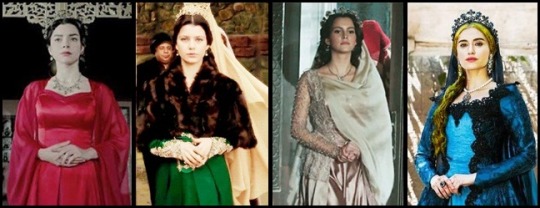
We'll come closer to the end of Kösem sultan and her magnificent story :,(. Now let me present these four ambitious hasekis in different time but lived below the same sky (don’t ask me why I included Ayşe, just keep reading it! ;-) and why I don’t include Hürrem vs Valide Ayşe Hafsa because mainly I forgot their story XP). Hürrem started this "opposing your mother-in-law" continued with Nurbanu to Turhan sultan (only in MY and MYK dear, not historically), but how their stories differ? Let's see...:
Afife Nurbanu Sultan:
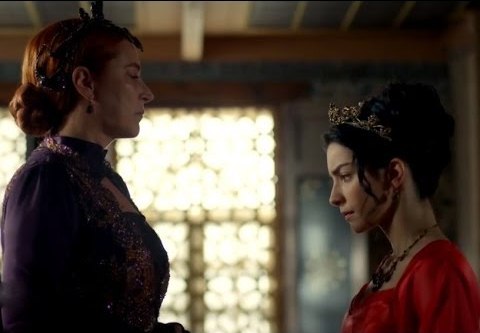
Her mother-in-law was Hürrem sultan, Hürrem wanted her to be a smart but obedient daughter-in-law, she became a gozde (favorite) to sehzade Selim (later Selim II). Iirc, Nurbanu's conflict with Hürrem started when Hürrem refused to protect & defend her after she had fight with Hurichihan (Hatice sultan's daughter) & caused her death. Afraid to the consequence of her deed, she threatened Hürrem to show her letter about ordering Nurbanu to kill Suleyman I's other gozde, Nazenin hatun, from this onwards their conflict began. Other factor that driven Nurbanu is her ambition to support Selim to be the successor, next sultan after Suleyman I, especially after she found that Hürrem was supporting her other son, sehzade Bayezid. Her conflict with Hürrem mainly to prevent and foiled her to support Beyazid. Even after Hurrem's death, Nurbanu was still occupied with Beyazid's remaining supporters (including Mihrimah & Rustem->though Rustem would betray later via Gracia Mendes' seduction (LOL)).
Mahpeyker Kösem Sultan:
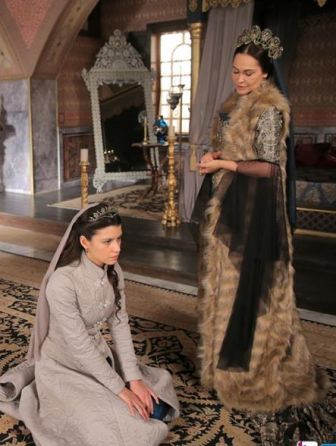
Her actual mother-in-law was Handan sultan, but her nemesis (in the show) was Safiye sultan, Handan's mother-in-law & the grandmother of Kosem's spouse Ahmed I. Similar with Hürrem, Safiye intended to present Kösem to Ahmed and use her to influence & control his power. Their conflict started when Safiye, unable to control Kösem anymore, decided to kill her father. Feeling betrayed, Kösem decided to avenge her father's death (while being a heroine too) by leading Safiye's daughter, Fahriye sultan to her death. Safiye repaid it with Yasemin hatun (Kösem's sister)'s death and Kösem paid it back with Iskender/sehzade Yahya (Safiye's missing son)'s death. Also Kösem being heroine wanted to protect Ahmed and the state from her, especially when Safiye did the coup d'etat, causing chaos in the palace. Not long after, Ahmed died, leaving Kösem with her little children fighting Safiye (and later Halime) alone.
Ayşe Sultan:
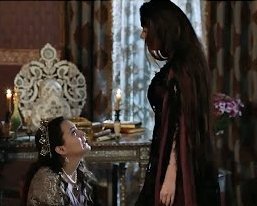
Her mother-in-law was Kösem sultan and her spouse was sultan Murad IV. Like Hürrem and Safiye, Kösem too expected that Ayşe would be an obedient, helpful & easily controlled by her. I think during the very first episode of season 2, there would be a rivalry and conflict between Ayşe and Kösem, how Ayşe said that she wished to support Murad and keep him away from the influence of his mother in ruling the state. Ayşe also said that she refused to follow every Kosem's orders and be obedient to her. Too bad this rivalry concept got thrown out and replaced with her fake rivalry with Farya as Mahidevran 2.0. Ayse's story here would be mainly fanon:
After Kösem's ten years regency, Murad became the sultan officially (I mean, the time when Murad was able to govern the state independently), but with Kösem's influence in the government, viziers & jannisaries, they were already familiar and support her and the people greatly trust her. Murad was struggling to gain the trust and recognition from his people. Everyone (including viziers and jannisaries) still doubted this young sultan's capability to rule, they always compared him to Kösem. Murad wanted to step out from his mother's shadow, he tried to limit Kosem's power and influence, he wanted his mother as valide sultan back to her initial duty, managing the harem. As loyal spouse and his most beloved woman, Ayşe supported Murad and helped him to be able to rule independently by trying to dispel and keep him away from his mother's influence, she also managed to seek the support from the people including some viziers. Ayşe chose to be a good wife and queen/haseki who supported her spouse the sultan in government rather than being used and controlled by his mother. Thus her conflict with Kösem sultan began. Besides her conflict with Kösem, Ayşe also had her own problem, she was struggling to provide Murad a healthy sehzade who would have his chance to survive adulthood and become the heir for Murad's throne. Murad's relationship with his mother was gradually strained. Seeing her son's insubordination to her, Kösem decided to get rid of Ayşe as the mastermind of the destruction of their family relationships. Their rivalry was fierce until Murad's death came. Ayşe who had lost her greatest support (and love) Murad and lost her sehzade who could be made an heir, lost her power, influence and purpose completely. She was immediately removed by Kösem and sent away to live in the Old Palace.
Turhan Hatice Sultan:

Her mother-in-law was also Kösem sultan and she was the spouse of Ibrahim I. Turhan had learned all the tales of the powerful sultana in Ottoman and had her own ambition. She saw Kösem as her role model and at the same time she wanted to be like her. Kösem still expected her to be easily controlled and obedient to her but Turhan thought that being obedient and passive won't make her a powerful figure. She found that to fight her mother-in-law, she had to get her sultan's support. Observing her situation and circumstance, getting the support from her spouse seemed difficult since Ibrahim had numerous gozde that he loved, he even appointed his eight gozde (including her) as his haseki. Turhan could become the Baş Haseki had been a lucky one for her since she had Ibrahim's oldest sehzade Mehmed. The odds of getting support from her spouse are getting smaller as he brought new gozde again and this gozde became his legal wife (Telli Humaşah). Thus, rather than wage an open war to Kösem, she decided to gain the trust for her. By being the closest person to Kösem, she could observe everything, from how Kösem gains her supports to find a chance to overthrow her. During this time, Turhan managed to gain the trust of viziers, but Kösem still had the most influence in jannisaries. Turhan also tried her best to secure her son and protect him as the next heir after Ibrahim's death. When Ibrahim died, Mehmed the oldest sehzade succeeded him. But as long as Kösem still alive, her struggle was not over yet. Kösem who had many experience as regent thought that inexperienced Turhan wasn't competent enough to rule the state, Kösem was preventing her to be in charge of state affairs. Turhan disagreed since she felt entitled as the mother of Mehmed IV. Kösem later went to far by attempting to remove Mehmed and replaced him with sehzade Suleyman (the son of supposedly more obedient haseki Saliha Dilasub). Driven by her will to protect her son's life, Turhan decided to get rid Kösem completely and her men successfully murdered her. Eventually, Turhan became regent and rule the state together with her son. My fanon is that the previous haseki sultan Ayşe wanted have her revenge with Kösem, so she temporarily helped Turhan behind the scene.
Summary:
Many young sultana during their time as queen consort (haseki) had strained relationship with her mother-in-law, the queen dowager (valide sultan), they had similar ambitions but they had their different motivation and situation.
In Nurbanu's case, she was a favorite of Selim II during his sehzade years. There was sehzade Beyazid as threat who challenged Selim's way to be the heir. Being supportive to her spouse, Nurbanu made sure that Selim will success it. Nurbanu's main focused was how Selim would take the throne.
In Kösem's case, she initially was driven by revenge. But later when she found that Ahmed I her spouse's life was also in danger, she fought to protect him. Safiye's failed attempt to control Ahmed drove her to led a coup d'etat. Ahmed with the help of Kösem successfully weakened Safiye's power and influence. But not long after that, Ahmed died and Kösem lost her greatest support. Kösem became alone surrounded with many dangerous snakes especially Safiye and Halime, though in the end she was able to get rid of them.
In Ayse's case, Murad became a sultan who just been deemed worthy to rule by his own. Ayşe helped Murad to gain the trust and to be recognized by his people, she wanted him to get out from Kösem's shadow. Ayşe also had another burden since Murad didn't have an apparent heir yet. In the end Murad died without heir and his brother Ibrahim was the one who succeeded him. Ayşe lost her position and had to spend her life in the Old Palace according to the custom.
In Turhan's case and during her time, Ibrahim I had his eight harem girls as the haseki. Turhan happened to bore him the oldest sehzade Mehmed thus she became the Baş haseki. Turhan had to face her many harem rivals including the greatest threat who was Telli Humaşah, the girl Ibrahim brought and became his legal wife. Turhan was not really loved by Ibrahim (as she was not his most favorite). After Ibrahim's death, Turhan had her power struggle with Kösem sultan. She wanted to be regent ruling independently but her reign always overshadowed by Kösem. Their conflict became worse when Kösem wanted to get rid of Turhan's son and replaced him with her other grandson, thus leading to Kosem's death by Turhan's men hands.
TL;DR
All had their conflict with their MiLs but Nurbanu was haseki of sehzade whereas Kösem, Ayşe and Turhan were haseki of sultans. All supposedly outlived their MiL but canon MYK!Ayşe died before Kösem. Although Kösem had her conflict with her actual MiL Handan, her main nemesis was Safiye sultan, her MiL's MiL (or should I say grandmother-in-law). Nurbanu's spouse Selim I outlived his mother but Ahmed I (Kosem's spouse), Murad IV (Ayse's spouse) and Ibrahim I (Turhan's spouse) died before their mothers (and grandmother in Ahmed's case). Nurbanu, Kösem and Turhan had their surviving sons took his fathers' throne whereas Ayşe didn't. Nurbanu, Kösem and Ayşe were loved and greatly supported by their spouses whereas Turhan was not really (but canon-MYK!Ayşe instead was greatly abused and hated by him), Ibrahim might loved Turhan but she was not his most beloved one. Nurbanu, Kösem and Turhan succeeded in becoming valide sultan and became the most powerful sultana in their respective era whereas only Ayşe who couldn’t make it since she didn’t have a sehzade (the prince), the most important asset for every women as royals.
Conclusion:
Powerful and ambitious women in MY and MYK always expect their daughters-in-law to be the obedient and easily-controlled. Unbeknownst for them, they became the role models of their younger generations. Thus, instead having the obedient DiL, they got their own reflection: the DiL that exactly the same with their younger selves. These DiL won’t easily submit to them just like themselves in their younger days.
Also I wonder when Turhan’s hair color was mentioned as blonde, There is no popular culture that show Turhan with blonde hair. Mahpeyker: Kösem Sultan’s Turhan was brunette and Muhteşem Yüzyıl: Kösem‘s Turhan is dark haired (likely black). I’m sorry with my shitty bad quality editing but I want my Turhan’s blonde XD, I’m not expert.
#valide sultan#haseki sultan#muhtesem yuzyil#muhtesem yuzyil kosem#my thoughts#mother in law vs daughter in law#ottoman empire#hurrem sultan#nurbanu sultan#safiye sultan#kosem sultan#ayse haseki sultan#turhan hatice sultan#haseki ayse sultan's story is mainly fanon#canon!MYK story gave Ayse's story & character injustice#canon!MYK is not historically canon either#respect haseki ayse post#blonde!Turhan
22 notes
·
View notes
Note
can you tell us some things about the eight concubines of ibrahim i? thanks a lot, I love your blog c:
thank you so much!!
actually, i don’t really know much about them???
turhan hatice: i talked about her here mother to mehmed iv, fatma and beyhan
saliha dilaşub: potentially his favourite, as she was the only haseki to earn 1,300 aspers??? she hoped kosem and turhan hatice would destroy each other so she could put her son on the throne. when turhan hatice discovered kosem’s plan to dethrone mehmed (which involved putting saliha’s son suleyman on the throne), she exiled her. she only came back when suleyman became sultan. mother to suleyman ii, ayse and possibly to ümmü gülsüm
hatice muazzez: A CUPCAKE. no, seriously. apparently she died of literally fright after a fire in the old palace??? poor babe, she never got to be valide sultan :((( mother to ahmed ii
leyla saçbağli: don’t know anything about her, sorry. according to wikipedia (but let’s not trust it too much) she was the mother of selim, atike and bican
ayşe: nothing. she was mother to murad
mahienver: noooope. mother to osman and kaya
şivekar: apparently ibrahim liked very large women so he sent his men to find the largest in the world and it was şivekar ?? i don’t know if this story is true or not. mother to bayezid and cihangir
hümaşah: the telli haseki, ibrahim’s legal wife. she married ibrahim in 1647 and kosem’s daughters ayse, fatma and hanzade and murad’s daughter kaya were appointed as her servants. apparently her palace was all carpeted in fur??? ibrahim loved furs maybe mother to orhan
28 notes
·
View notes
Note
Sultan Bayezid II + harem and children
Consorts:
Ayşe Hatun (?? - 1512?): daughter of Alâüddevle Bozkurt Bey of the Dulkadir dynasty and possibly niece of Sitti Mukrime Hatun (consort of Mehmed II). She is usually given as mother of Selim I, but she was not. According to Alderson, she died in 1512.
Bülbül Hatun (?? - 1515): mother of Şehzade Ahmed and Hundi Sultan. She was a very charitable person, building a mosque complex in Ladik, another mosque, school and fountain in Amasya and a school in Bursa. When her son was executed by Selim I, she retired to Bursa where she built a tomb for him. She is buried next to her son.
Ferahşad Hatun (?? - after 1521): Şehzade Mehmed’s mother, she is variously called Ferruhşad or Muhterem. It is possible that her whole name was Muhterem Ferruhşad. Upon the death of her son in 1505, she retired to Bursa like it was customary for the mother of a deceased prince. She established a foundation in Silivri n 1521, so she must have died later.
Hüsnüşah Hatun (?? - after 1511): mother of Şehzade Şehinşah and Sultanzade. She followed her son first to Manisa and then to Konya. After Şehzade Şehinşah died, she settled in Bursa where she eventually died. She had built the Hatuniye Mosque in 1490 in Manisa during her son’s governorship there. She wrote to Selim I on behalf of Mevlana Pir Ahmed Celebi, one of Şehzade Şehinşah’s men who had not received a new post after the prince’s death.
(Ayşe) Gülbahar Hatun (?? - 1505): mother of Selim I, she was a slave concubine and not a highborn princess as tradition maintains. She died in Trabzon during her son’s princely post and she was buried in the Hatuniye Tomb there.
Gülruh Hatun (?? - after 1520): mother of Şehzade Alemşah and Kamer Sultan. During the reign of Bayezid II, she used to correspond with him about their son: “My fortune-favored padishah, heed my cry for help, … rid us of [my son’s] tutor, teacher, and doctor. They are masters of corruption…. Send us good Muslims because our situation has been pitiful since these persons arrived. They have deprived me of my mother’s rights…. If these seven do not go, they will utterly destroy the household of my son, your servant”. Alemşah would die because of heavy drinking, and Gülruh Hatun retired to Bursa. She died in the early days of Süleyman the Magnificent’s reign and was buried in the Gülruh Hatun Tomb in the Muradiye Mosque.
Nigar Hatun (?? - 1503): according to Uluçay and Oztuna, she was the mother of Şehzade Korkut and Fatma Sultan. She followed her son first in Manisa and then in Antalya, where she died and was buried.
Şirin Hatun (?-?): mother of Şehzade Abdullah and Aynışah Sultan according to Uluçay. She is not present in Sicill-i Osmani among Bayezid II’s consorts. It is not known when she died but she was buried with her son and daughter in her son’s tomb. She had built a school in Bursa and a mosque in Trabzon.
Children:
Damad Şehzade Abdullah (1465? - 6.11.1483): eldest son of Bayezid II, he was governor of Trabzon, Manisa and Konya, where he died. He is called Damad as well because he had married his cousin Ferahşâd Sultan, daughter of Mehmed II’s son Şehzade Mustafa. With her she had: a son (1481 - 1489), Aynışah Sultan (1482 - ??) and Şâhnisâ Sultan (1484 - ??). Both princesses reached adulthood as they both got married.
Ayşe Sultan (1465? - after 1515): according to Uluçay she may have been sister to Şehzade Ahmed or to Şehzade Korkut. She married Dâmâd Güveği Sinân Paşa around 1480 and had 6 children with him: Sultanzade Ahmed Bey, Sultanzade Mustafa Bey, Hanzade Ayşe Mihrihan Hanımsultan (who later married Dukagin-zâde Sultanzade Mehmed Paşa), Kamer-Şâh Hanımsultan (who later married Ahmed Bey son of Grand Vizier Mesîh Paşa), Fatma Hanımsultan (who later married Ahmed Bey son of Grand Vizier Mesîh Paşa) and Gevherşah Hanımsultan (who later married İbrahim Bey son of Ömer Bey). Ayşe Sultan built a mosque and a school in Gallipoli and in 1505 she established a foundation. She was buried in Istanbul.
Hatice Sultan (1465? - 1500): the identity of her mother is unknown. She firstly married Dâmâd Müderris Kara Mustafa Paşa around 1479 and had two children with him: Sultanzade Ahmed Çelebî (1480?-1500) and Hânzâde Hanımsultân. She secondly married Dâmâd Fâik Paşa sometime after 1483. Hatice Sultan built a mosque, school and fountain in Edirnekapi in Istanbul. She was buried in Bursa in the Hatice Sultan Tomb, built by her son.
Şehzade Ahmed (1466? - 24.4.1513): Selim I’s biggest opponent during the fight for the throne, he was Bayezid II’s favourite son and the one he wanted to be succeeded by. His only known consort was called Bülbül like his mother. Ahmed had several children: Şehzade Murad (1495 - 1519), Şehzade Alaeddin (1496? - 1513), Şehzade Süleyman (1497? - 1513), Şehzade Osman (1498? - 1513), Şehzade Ali (1499? - 1513), Şehzade Mehmed (1500? - 1513), Şehzade Kasim (1501 - 1518), Kamer Sultan (later wife of Dâmâd Mehmed Çelebî), Fatma Sultan (later wife of Dâmâd Mehmed Bey), and an unnamed princess (later wife of Dâmâd Silahdar Süleyman Bey)
Şehzade Korkut (1467 - 10.3.1513): another of Selim I’s opponents, he thought that he could quietly take the throne while Selim was busy with their brother Ahmed. He paid the janissaries for their support but when Selim arrived in Istanbul, they switched to his side. Governor of Amasya and then Manisa, he was allowed to return there after Bayezid II’s death but eventually Selim I had him executed. He had four children: two sons who died in infancy and Fatma Sultan (later wife of Dâmâd ‘Alî Bey) and Ferahşad Sultan (later wife of Dâmâd Malkoçoğlu ‘Alî Bey and Dâmâd Mehmed Balı Efendi)
Gevherimülûk Sultan (1467? - 1550): the identity of her mother is unknown. She married Dukaginzâde Dâmâd Ahmed Paşa and had two children with him: Nesl-i Şâh Hanımsultan (who married İskender Paşa) and Sultân-zâde Mehmed Paşa (who married his cousin Hanzade Ayşe Mihrihan Hanımsultan daughter of Ayşe Sultan). Gevherimülûk Sultan built a school near the Zal Mahmud Paşa Mosque, and she was buried there when she died.
Selçuk or Selçukşah Sultan (1469 - 1508): the identity of her mother is unknown. She firstly married Dâmâd Ferhâd Bey around 1484 and had two children with him: Nesl-i Şâh Hanımsultan (1486?-1550?) and Sultânzâde Gaazî Husrev Bey/Paşa (1484?-18.6.1541). She secondly married Dâmâd Mehmed Bey in 1486 and had three daughters with him: Hân-zâde Hanımsultan (who married her cousin, son of İlaldı Sultan), an unnamed daughter who married a son of Halil Paşa, and another unnamed daughter who later married Grand Vizier Yûnus Paşa. Selçuk Sultan died in 1508 and was buried in the Selçuk Sultan Mausoleum inside the Bayezid II Mosque in Istanbul.
Hundi Sultan (around 1470 - 1511): daughter of Bülbül Hatun and Şehzade Ahmed’s sister. She married Hersekzade Ahmed Paşa in 1484 and with him had: Sultânzâde Mûsâ Bey; Sultânzâde Mustafa Bey (governor of Bozok in 1533); Kamer-Şâh Hanım-Sultân; Hümâ-Şâh Hanım-Sultân (died after 1551)
Selim I (1470/1471 - 21 September 1520): 9th sultan of the Ottoman Empire.
Şehzade Şehinşah (1474 - 1511): governor of Manisa and then Konya, he died at 37 years old and was buried in Bursa in the Muradiye Mosque near the Şehzâde Mustafa Tomb. His only known consort was Mükrime Hatun, mother of his son Şehzade Mehmed-Şah, who later married his own cousin Şahnisa Sultan, daughter of Şehzade Abdullah.
Şehzade Mahmud (1475 - 1507?): governor of Kastamonu and later of Manisa, where he died at 32 years old. He had three sons and two daughters: Şehzade Orhan, Şehzade Musa, Şehzade Emir-Süleyman (all executed on Selim I’s orders in 1512), Ayşe Hundi Sultan (later wife of Damad Ferruh Bey), Hançerli Fatma Sultan (later wife of Damad Mehmed Bey)
Şehzade Mehmed (1476? - 12.1504): governor of Kefe, where he died. He was married to a princess of the Giray Dynasty, and had two children: Fatma Sultan (1500? - 1556) and Şehzade Mehmed (1505 - 1515, postumous)
Şehzade Alemşah (1477 - 1502): governor of Menteşe and then Manisa, where he died. He had a son and two daughters: Şehzade Osmanşah (1492 - 1512), Ayşe Sultan (later wife of Sultanzade Dâmâd Mehmed Çelebî, son of Bayezid II’s daughter Fatma Sultan) and Fatma Sultan (?? - after 1520)
Aynışah Sultan (?? - after 1512): daughter of Şirin Hatun and sister of Şehzade Abdullah, she married Akkoyunlu Damad Göde Ahmed Bey in 1490. She had two daughters with him: Hanzade Hanımsultan (who later married Sultanzade Yahyapaşazade Balı Paşa) and an unnamed daughter who married her cousin Şehzade Alaeddin, son of Şehzade Ahmed. Aynışah Sultan built a school in Istanbul and established a foundation in 1506. She was one of the princesses who sent letters of congratulations to Selim I when he became sultan. She died after 1512 and was buried next to her mother and brother in Bursa.
Hüma/Hümaşah Sultan (?? - after 1504): the identity of her mother is unknown. She married Dâmâd Antalyalı Balı Paşa around 1482, but seemed not to have had any children. She was buried in Bursa near the Muradiye Tomb.
İlaldı Sultan (?? - before 1518): the identity of her mother is unknown. She married Dâmâd Ahmed Ağa (later Hâin Ahmed Paşa), governor of Rumelia and later governor or Egypt and Second Vizier. With his she had two children: Şâh-zâde Ayn-i Şâh Hanımsultan (who later married Abdüsselâm Çelebî) and a son (who later married a daughter of Selçuk Sultan). İlaldı Sultan wrote a letter of congratulations to Selim I on his accession. It is not known when she died and where she was buried.
Kamer or Kamerşah Sultan (?? - ??): daughter of Gülruh Hatun, she was married to Damad Nişancı Kara Davud Paşa. She had a daughter who later married one Mesih Bey. She was buried in the tomb of her mother in Bursa.
Şah or Şehzade Şah Sultan (?? - after 1506): the identity of her mother is unknown. She married Dâmâd Nasûh Bey around 1490 and had a daughter with him. Both husband and wife were very involved in charity deeds, and Şah Sultan even built a mosque in 1506. When she died she was buried in her sister Hatice’s mausoleum in Bursa.
Şah-zade Sultan (?? - 1520): according to Oztuna, she was a different princess from Şah. She married Malkoçoğlu Dâmâd Yahyâ Pasha in 1501/1502 and had three sons with him: Sultanzade Yahyapaşazade Gaazî Küçük Balı Paşa (?? - 1543), who married his cousin Hanzade Hanımsultan (daughter of Aynışah Sultan); Sultanzade Gaazî Koca Mehmed Paşa (?? - 2.1548), and Sultanzade Gaazî Ahmed Bey (?? - after 1543)
Sofu Fatma Sultan (?? - after 1515): daughter of Nigâr Hatun and sister of Şehzade Korkut. She married Dâmâd Güzelce Hasan Bey around 1504 and had two children with him: Sultanzade Dâmâd Mehmed Çelebi (who later married Ayse Sultan daughter of Şehzade Alemşah) and an unnamed daughter, who later married Ahmed Bey, son of Ali Bey and Fatma Hanımsultan (daughter of her sister Ayse). She was a very charitable person and left all her possession to the poor when she died. She was buried in the tomb of her half-brother Şehzade Ahmed in Bursa.
Sultanzade Sultan (?? - ??): daughter of Hüsnüşah Hatun and sister of Şehzade Alemşah, nothing else is known about her.
#anon#ask post#ask: ottoman history#*consortsandchildren#bayezid ii#ayse hatun#bulbul hatun#ferahsad hatun#husnusah hatun#ayse gulbahar hatun#gulruh hatun#nigar hatun#sirin hatun#ayse sultan daughter of bayezid ii#hatice sultan daughter of bayezid ii#gevherimuluk sultan daughter of bayezid ii#selcuk sultan daughter of bayezid ii#hundi sultan daughter of bayezid ii#selim i#aynisah sultan daughter of bayezid ii#huma sultan daughter of bayezid ii#ilaldi sultan daughter of bayezid ii#kamer sultan daughter of bayezid ii#sah sultan daughter of bayezid ii#sahzade sultan daughter of bayezid ii#sofu fatma sultan daughter of bayezid ii#sultanzade sultan daughter of bayezid ii
57 notes
·
View notes
Photo
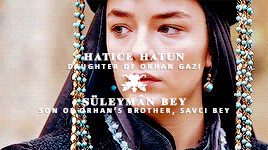


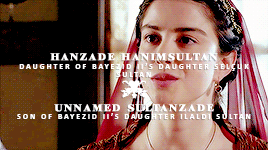

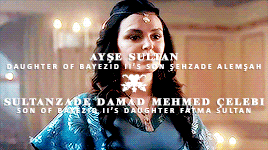
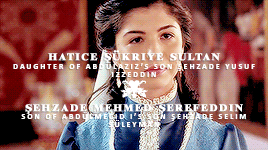
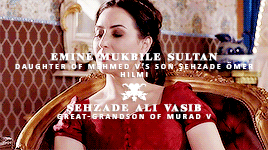
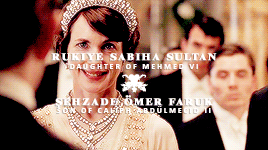

Ottoman princesses who made intra-dynastic marriages -- requested by anon
#history#historyedit#ottoman history#hatice hatun daughter of orhan gazi#bayezid ii#mehmed ii#rukiye sabiha sultan daughter of mehmed vi#abdulaziz#mehmed v#murad v#sehzade omer hilmi son of mehmed v#sehzade omer faruk son of abdulmecid ii
199 notes
·
View notes
Photo






𝐢𝐧 𝐭𝐡𝐞 𝐦𝐨𝐧𝐭𝐡 𝐨𝐟 𝐌𝐚𝐫𝐜𝐡 𝐢𝐧 𝐎𝐭𝐭𝐨𝐦𝐚𝐧 𝐡𝐢𝐬𝐭𝐨𝐫𝐲
#history#historyedit#ottoman history#ottomanladiesedit#*everymonth#reftaridil kadin#beyhan sultan daughter of ibrahim i#hibetullah sultan daughter of abdulhamid i#sehzade mehmed son of ahmed i#bayezid i#hatice sultan daughter of murad v#esma sultan daughter of ahmed iii#pargali ibrahim pasa#durrinev kadin#sayan kadin#sehzade abdulkadir son of abdulhamid ii#naime sultan daughter of abdulhamid ii#osman ii#akile hatun#abdulhamid i#saliha sultan daughter of ahmed iii#esma sultan daughter of abdulaziz#zeynep sultan daughter of ahmed iii#zubeyde sultan daughter of ahmed iii#resan hanim#mehmed ii
136 notes
·
View notes
Photo
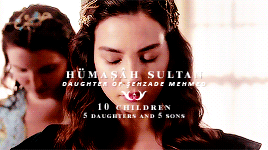
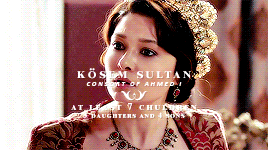

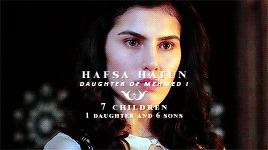


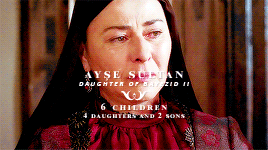

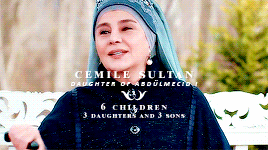
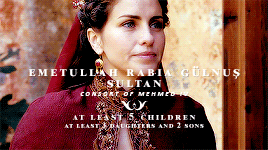
Ottoman women who had the most children
#history#historyedit#ottoman history#humasah sultan daughter of sehzade mehmed#kosem sultan#hatice sultan daughter of selim i#hafsa sultan daughter of mehmed i#fatma hundi hatun daughter of bayezid i#haseki hurrem sultan#ayse sultan daughter of bayezid ii#hatice sultan daughter of mehmed iv#cemile sultan daughter of abdulmecid i#emetullah rabia gulnus sultan#ottomanladiesedit
195 notes
·
View notes
Photo






𝐭𝐡𝐞 𝐠𝐫𝐚𝐧𝐝𝐝𝐚𝐮𝐠𝐡𝐭𝐞𝐫𝐬 𝐨𝐟 𝐒𝐮𝐥𝐞𝐲𝐦𝐚𝐧 𝐭𝐡𝐞 𝐌𝐚𝐠𝐧𝐢𝐟𝐢𝐜𝐞𝐧𝐭
#history#historyedit#ottoman history#suleyman i#nergissah sultan daughter of sehzade mustafa#ayse humasah sultan#humasah sultan daughter of sehzade mehmed#ismihan sultan daughter of selim ii#gevherhan sultan daughter of selim ii#sah sultan daughter of selim ii#mihrimah sultan daughter of sehzade bayezid#hatice sultan daughter of sehzade bayezid#sah sultan daughter of sehzade mustafa#ayse sultan daughter of sehzade bayezid#hanzade sultan daughter of sehzade bayezid#fatma sultan daughter of selim ii#ottomanladiesedit
259 notes
·
View notes
Photo

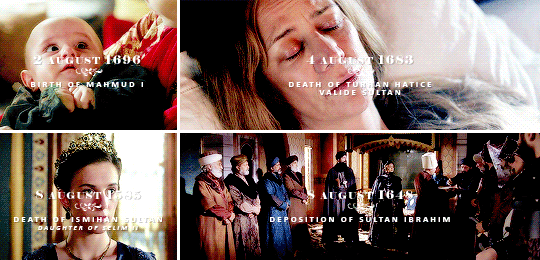


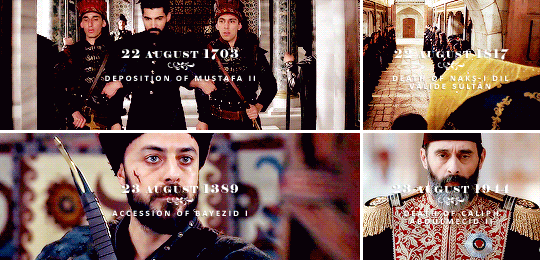




𝐢𝐧 𝐭𝐡𝐞 𝐦𝐨𝐧𝐭𝐡 𝐨𝐟 𝐚𝐮𝐠𝐮𝐬𝐭 𝐢𝐧 𝐨𝐭𝐭𝐨𝐦𝐚𝐧 𝐡𝐢𝐬𝐭𝐨𝐫𝐲 | insp by @winterhalters
#history#historyedit#ottoman history#ottomanladiesedit#*everymonth#turhan hatice sultan#ismihan sultan daughter of selim ii#ibrahim I#ayse sultan daughter of abdulhamid ii#esma sultan daughter of ahmed iii#cemile sultan daughter of abdulmecid i#mustafa ii#naksidil sultan#bayezid i#abdulmecid ii#emine sultan daughter of abdulaziz#aliye sultan daughter of murad v#behice sultan daughter of abdulmecid i#fatma sultan daughter of abdulmecid i#rukiye sabiha sultan daughter of mehmed vi#selim i#murad v
139 notes
·
View notes
Photo
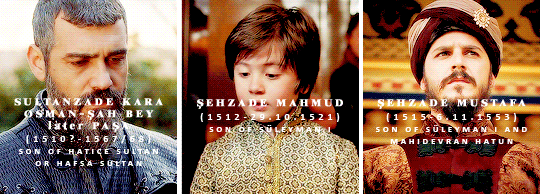

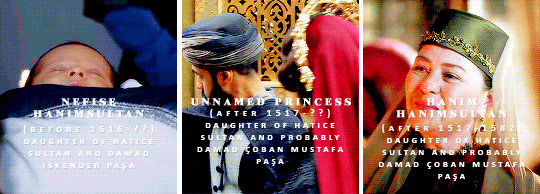

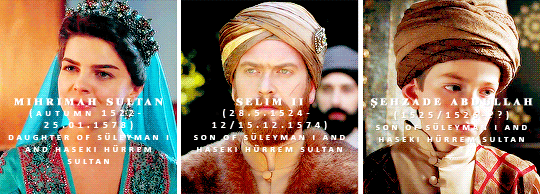
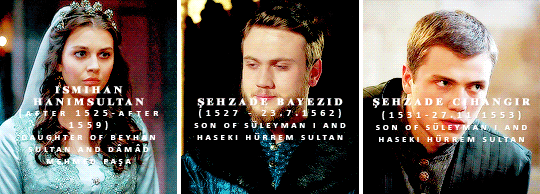
OTTOMANLADIES’ 2ND BIRTHDAY CELEBRATIONS
Ayşe Hafsa Sultan + known grandchildren -- requested by anon
#history#historyedit#ottoman history#ayse hafsa sultan#hatice sultan daughter of selim i#beyhan sultan daughter of selim i#suleyman i#sehzade mustafa son of suleyman i#mihrimah sultan#sehzade mehmed son of suleyman i#selim ii#sehzade bayezid son of suleyman i#sehzade cihangir son of suleyman i#ottomanladiesedit#*requested
620 notes
·
View notes